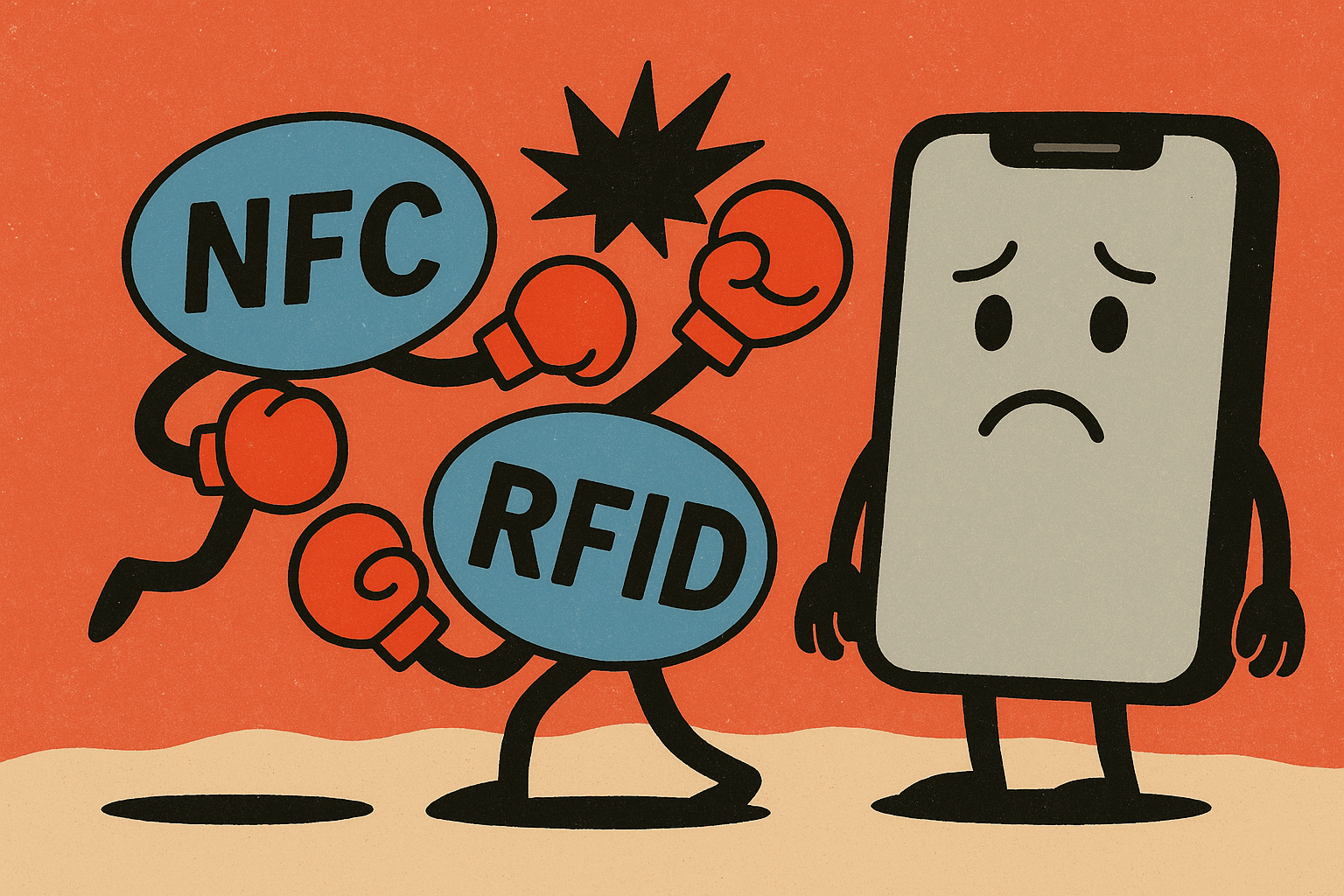Tapping into the Magic of NFC on iPhones: An Insider's Look

The technology that we interact with daily is filled with tiny marvels that usually go unnoticed. They unobtrusively play their part, working in harmony to provide us with the convenience that we often take for granted. One such unsung hero is the Near Field Communication (NFC) technology that powers the Apple iPhones.
What? Never heard of NFC before? No worries. That's what I am here for. In this post, we are going to demystify NFC and explain how it works on your iPhone. It’s easier to grasp than you might think – kind of like solving a Rubik’s cube, except you won’t have to twist anything but your understanding.
NFC: What Is It?
Near Field Communication (NFC) is a set of protocols that allows two devices to communicate wirelessly when they are within close proximity – usually about 4 centimeters or less. NFC is akin to a simplified version of Bluetooth or Wi-Fi, albeit with a shorter range. While this might seem like a limitation, this limited range is precisely what makes NFC ideal for secure transactions, like making mobile payments via your iPhone.
NFC on iPhones
NFC functionality on iPhones was first introduced with iPhone 6 and iPhone 6 Plus, back in 2014. However, Apple's approach was quite cautious, and initial NFC functionality was limited to Apple Pay transactions only. It wasn't until the launch of iOS 11 that Apple began to unlock the broader potential of NFC with the addition of NFC tag reading capabilities.
How Does NFC Work on Your iPhone?
While NFC might seem complex, it's essentially about communication and identification. NFC devices communicate using radio waves. They can operate in one of two modes: active or passive. In active mode, both devices generate a radio frequency and exchange data. In passive mode, only one device generates a radio frequency—the 'reader'—and the other device—the 'tag'—responds with its information.
When it comes to iPhones, Apple uses NFC primarily for mobile payments via Apple Pay. When you make a payment using Apple Pay, your iPhone uses NFC to communicate with the payment terminal.
Your iPhone (the reader) sends out a signal that wakes up the NFC chip in the payment terminal (the tag). They then exchange data, such as your payment information, which is securely stored and encrypted in a dedicated chip on your iPhone called the Secure Element.
NFC Beyond Payments: The Power of NFC Tags
The release of iOS 11 opened the floodgates for NFC use beyond payments, allowing iPhones to read NFC tags embedded in posters, labels, and other items. Tapping an NFC-enabled iPhone to a compatible tag can trigger actions such as opening a website, launching an app, or even controlling smart home devices.
This NFC tag reading happens through the "Core NFC" framework in iOS, enabling apps to detect NFC tags and read messages that contain NDEF (NFC Data Exchange Format) data. An NFC tag holds data – such as a URL, a text, or commands – that can be read by an NFC-enabled device like an iPhone. This interaction is quick and seamless, occurring with a simple tap and no need for pairing like in Bluetooth technology.
Privacy and Security
Perhaps you're wondering: "With all this data transfer, is NFC secure?" The answer is a resounding yes. First, the short range of NFC makes it difficult for unauthorized devices to intercept the communication. Moreover, Apple Pay uses tokenization to further enhance security. Instead of sending your actual credit card details to the payment terminal, Apple Pay sends a one-time-use token that represents your card information. This way, even if a data breach occurs, your actual card details remain safe.
So, there you have it! NFC is another wonderful example of technology simplifying our lives and making complex processes feel almost magical. From contactless payments to effortless information sharing, NFC has quietly integrated itself into our daily lives, opening the door to a world of convenience with a simple tap. I hope this post helps you appreciate this tiny marvel that resides within your iPhone.
Discover the Best Blogs
Stay updated with our featured blog posts.

OpenPrintTag Support NFC.cool iOS

Building a Great App Clip Experience: Lessons from NFC.cool Business Card

Why Can't My iPhone Open My Condo's RFID Door? Understanding NFC vs RFID

Understanding the different types of NFC Tags and their suitability for iPhones

OpenPrintTag Support NFC.cool iOS

Building a Great App Clip Experience: Lessons from NFC.cool Business Card

Why Can't My iPhone Open My Condo's RFID Door? Understanding NFC vs RFID

Understanding the different types of NFC Tags and their suitability for iPhones

Breaking Free from Monotony - Adding Flair to QR Codes

Tap, Scan, Thrive: NFC.cool's QR Code Symphony in the Digital Age

